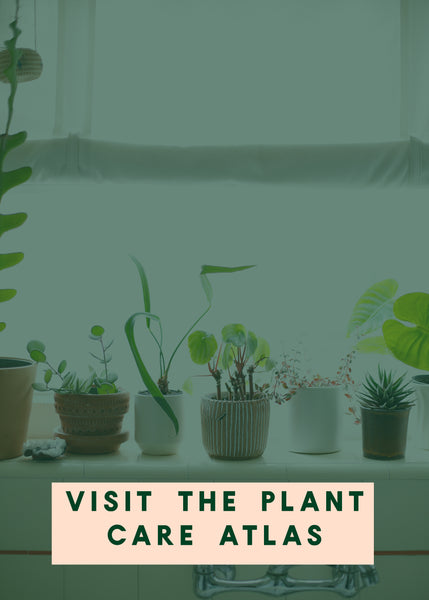Ask A Plant Pro: Fertilizer

Every month we answer a customer-submitted plant question, think of it like a Dear Abby column but for plant-related questions. This month's submission:
Dear Plant Pro,
How often should I fertilize my plants?
- Nutrient deficient in Norwalk
Why do plants need fertilizer?
What nutrients are most important for plants?
- Nitrogen (N)
- Phosphorus (P)
- Potassium (K)
- Nitrogen plays a big role in photosynthesis and tissue development, so it's especially important for leafy plants.
- Phosphorus is essential in cell division and helps transfer energy from one plant part to another. Plants grown for flowers often do best with fertilizer with a higher P number (higher phosphorus content).
- Potassium functions as an enzyme catalyst, which is important for plant growth. Potassium also regulates the opening and closing of a plant's 'pores' (technically called stomata), which is where that famous exchange of Co2, and O2 is happening, as well as where water vapor can escape plants. If the stomata aren't regulated properly, too much water can be lost through these pores, which leads plants to dry out too quickly.
What do the numbers on the fertilizer packaging mean?
What kind of fertilizer should I use?

- Slow-Release: People who are prone to forget or are too busy may prefer a slow-release type since there will be a period of time where you don't have to fertilize while the pellets or stakes are still actively releasing fertilizer. I find pellets feed plants more evenly, whereas the stakes can sometimes cause burn due or uneven growth to all the fertilizer being concentrated in a certain area of the pot.
- Liquids: Liquid fertilizer, which is often meant to be mixed into water, is a great option for folks who use a watering can to water their plants or bottom-water. Liquid fertilizers are easy to apply evenly, and as long as they're mixed at the correct strength come with low risks for fertilizer burn. Some liquid fertilizers can also be applied foliarly, where the mixture is sprayed on the leaves instead of applied to the soil .
- Granular: Granular fertilizers are great for mixing into DIY potting mixes before potting, or for 'top-dressing' a potted plant, where you mix the fertilizer into the top layer of potting mix. A wide range of organic fertilizer (as opposed to synthetic) comes in granular form, so if that's priority for you, this may be the option you'll want.
- Foams: Fertilizer foams are a relatively new addition to the world of fertilizer and some people swear by them. This type comes in a foaming pump bottle, and you apply the foam to the surface of the soil, or mix it into water. The one time I tried this type of fertilizer, I found it a little awkward to use, and hard to tell if I was getting the dosage right, so I don't necessarily get the appeal and prefer other types of fertilizers, but I know many love the foam.

When and how often should I fertilize?
We're also very excited to announce a new addition to our fertilizer lineup at Folia- Frass by Grubetts!

Created as part of a closed-loop system, right here in southern California, frass is an up-cycled product of Black Solider Fly larvae- similar to worm castings. By diverting it from landfills and putting those flies to work, Frass by Grubetts transforms FDA approved, pre-consumer food waste (which accounts for 40% of all food waste in the US) into certified organic fertilizer that not only feeds your plants, but creates healthy soil too. Frass contains chitin and beneficial biology which are known to assist in nutrient cycling, aid in nutrient uptake, reduce nutrient leaching, stimulate natural immune responses in plants, prevent predator insects and pests from harming plants, and promote resistance against soil pests and parasitic nematodes.
Use this dry, granular fertilizer to prep your soil when potting, as a top-dressing to encourage growth, or make frass 'tea' with it to use as a root drench or foliar spray. Frass can also be used in outdoor gardening, and as a compost starter. The 3-2-2 NPK formula is perfect for growing lush foliage, and the non-water soluble nitrogen releases slowly over 3-4 weeks, which minimizes risk for fertilizer 'burn'.
We've been evaluating fertilizers for years, hoping to find one we felt was a good addition to the liquid fertilizer from our friends at Good Dirt that we already carry and this was the first one that ticked all the boxes:
- Created as part of a closed loop system that's addressing multiple environmental concerns
- Organic matter based formula that doesn't contribute to environmental pollution
- Sourced locally to reduce emissions used to transport it
- Packaged using more sustainable materials
- And best of all- helps build healthy soil





